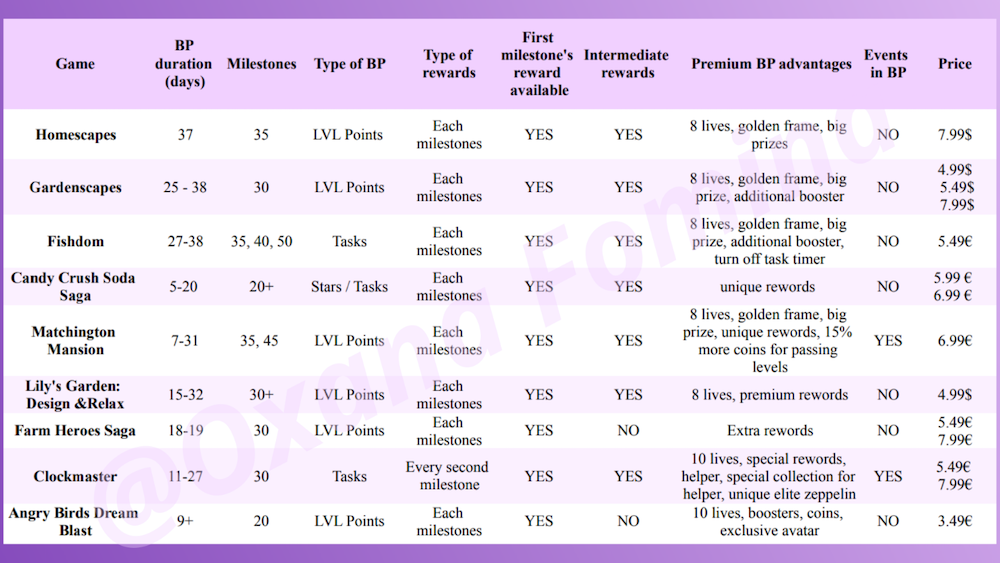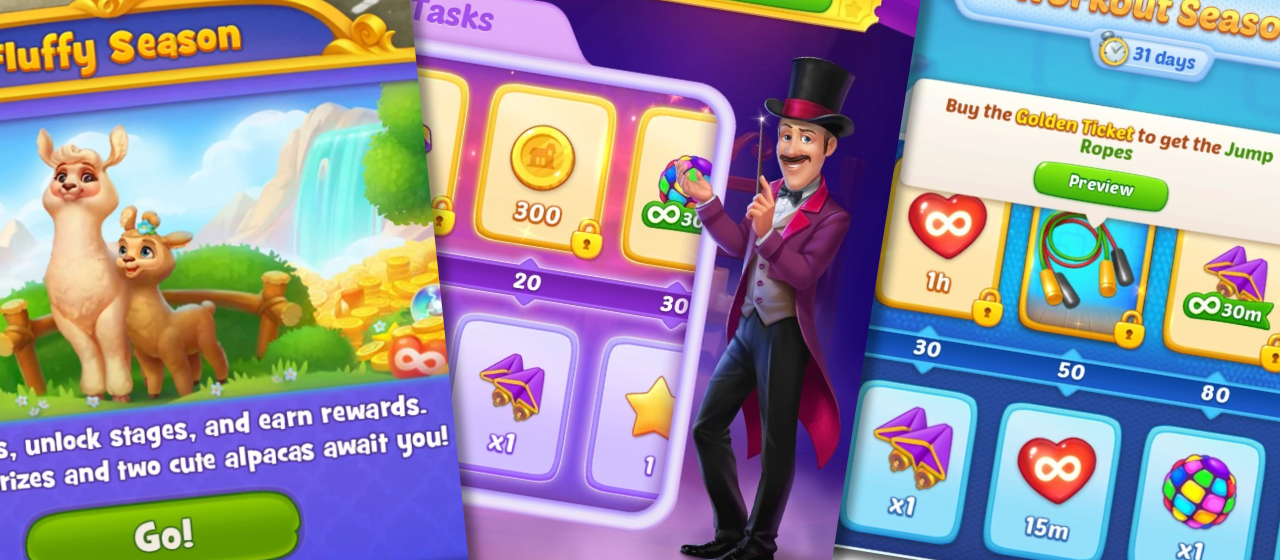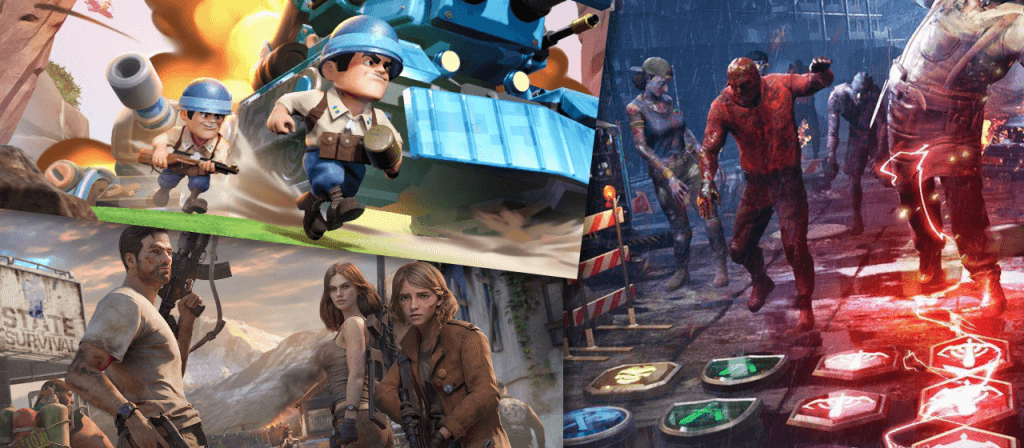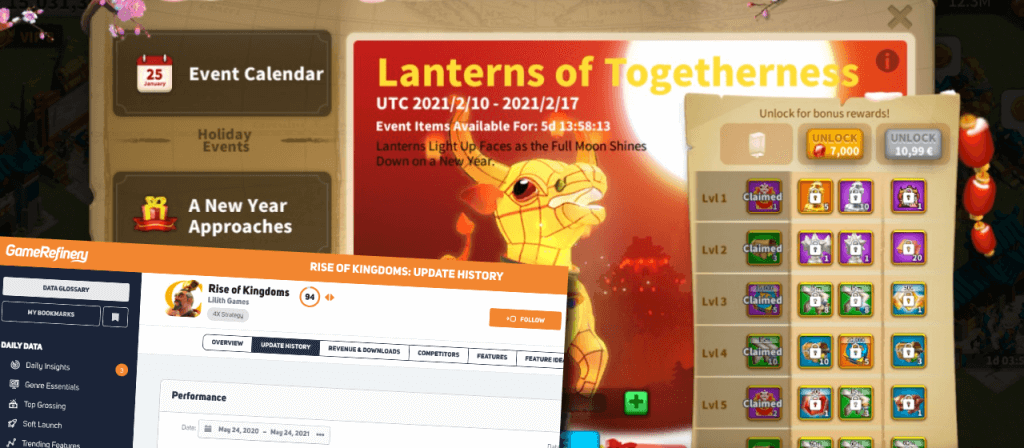51% of the games in the US top 100 grossing have implemented Battle Pass, and the feature continues to gain popularity (according to GameRefinery). In this article, I would like to talk about tips that you can use when creating or improving Battle Pass, with examples from games in the match3 genre.
Editor’s note: This is a guest post by Oxana Fomina, owner of games analytics consultancy Gradient Universe.
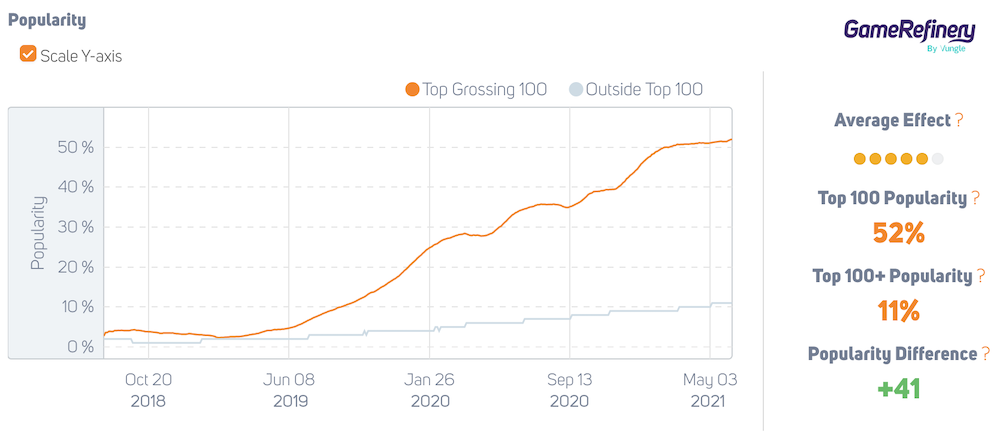
1. Battle Pass duration and the number of milestones
You can experiment with the number of milestones until the end of the season, as well as the length of the season in days. If you look at match3 games, a season can last anywhere from 7 days to 30+ days. If this is the first Battle Pass for your game, then it makes sense to make it in the form of a seven-day event and check your players’ reactions.
When choosing the number of days and steps, you should consider the following points:
- Rate how quickly they progress through the Battle Pass milestones
- What percentage of users have finished it, what percentage only got to the middle
- The average time that it takes to complete stages, etc.
This information will help you tailor your Battle Pass to increase the percentage of users who buy it each season. It is very important that the players have the feeling that they can reach the final goal and receive a super prize.
2. Rewards in Battle Pass
In match3 games, you can see two options for implementing rewards. Choose the one that works best for the audience of your game.
1. When a player who paid the Premium gets a higher amount of rewards.
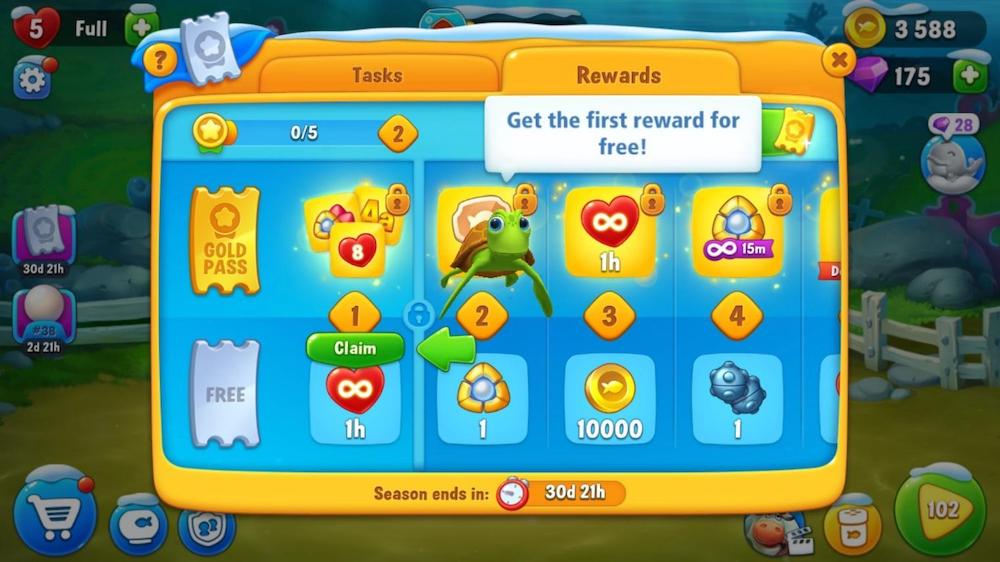
2. When a player who has not paid for the Premium Battle Pass receives prizes only once every 2-3 stages, not for each completed stage.
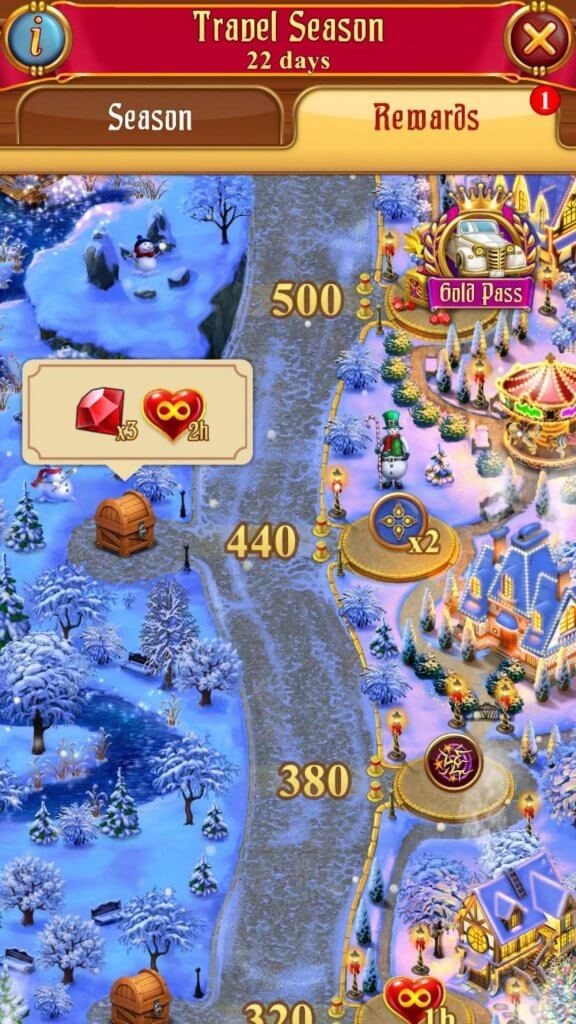
3. Choose which type of Battle Pass is optimal for your game
In games, there are several ways to implement the passage of stages in a Battle Pass. Choose the one that works best for your game.
1. The user goes through the main levels and gets stars for completing them. To complete a stage in the Battle Pass, the user must receive a certain number of stars.
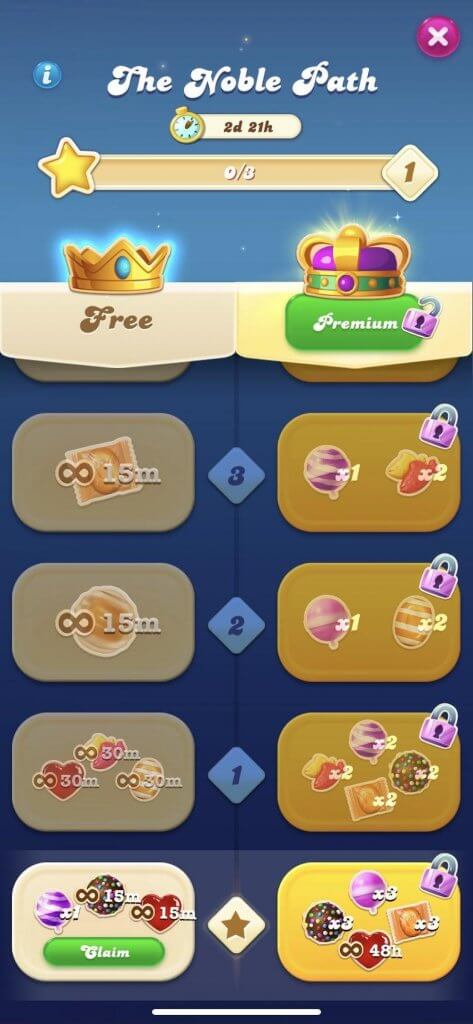
2. The user performs special tasks in the game and receives a special reward for their completion.
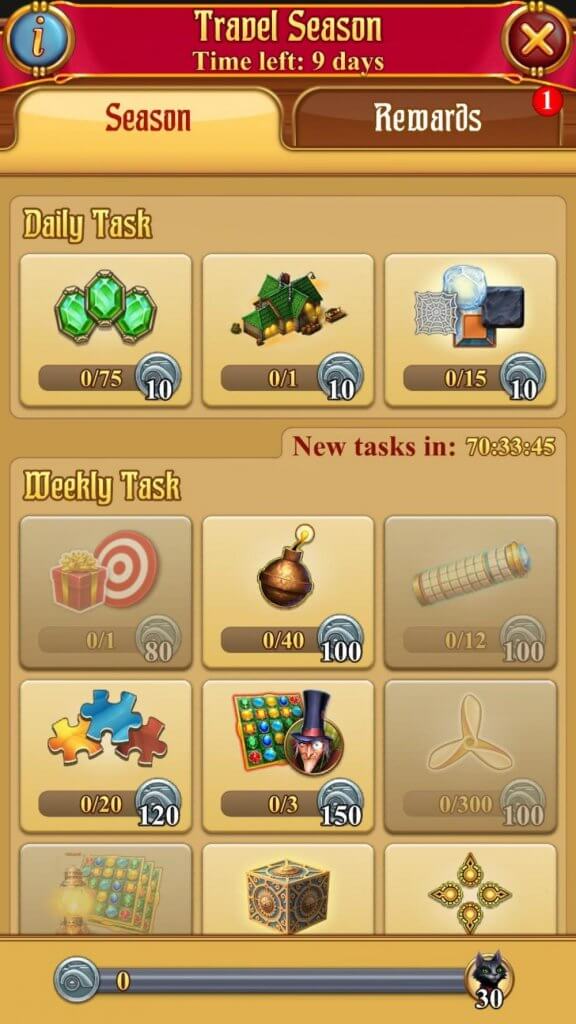
3. The user goes through the levels and receives special medals or points for passing them.
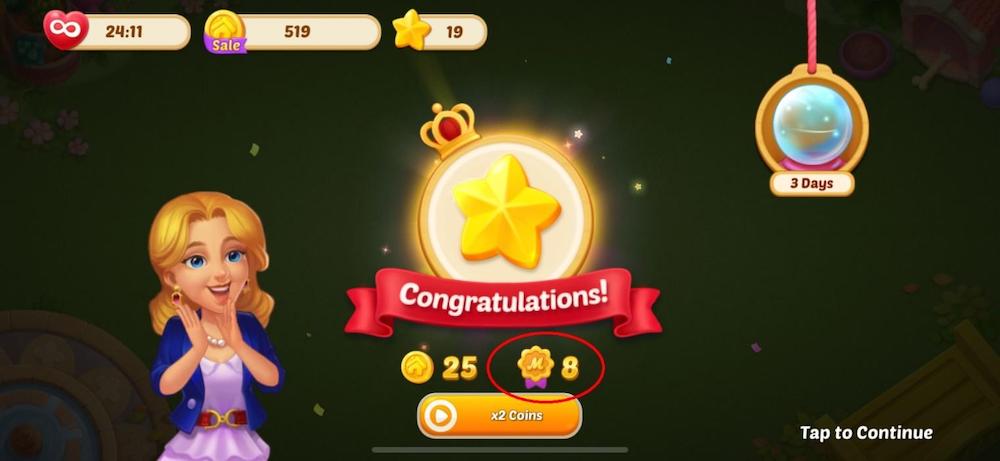
4. Engagement and retention
It is important that the player gets the most out of their Battle Pass. In Homescapes, you can see a great example of introducing intermediate prizes that motivate the user to move forward with the Battle Pass. You can have 3-4 prizes that are interconnected and motivate players to continue completing tasks. These can be special decorations, pets, and items for them, etc. Moreover, you can offer a super prize that will be available if the user buys the paid version of the Battle Pass and completes all tasks.
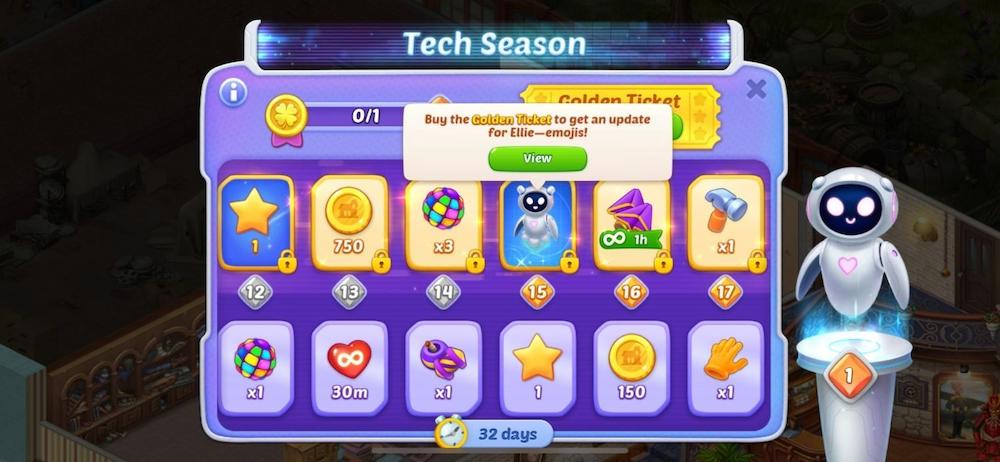
5. Increase conversion for Premium Battle Pass purchases
The Premium Battle Pass allows you to increase your paying conversion and increase your game’s revenue. It is vital that the user initially understands the benefits of the Premium Battle Pass.
There are several benefits that you can utilize in match3 games to encourage players to invest in Premium Battle Pass:
- A reward that is several times more valuable than what the user would receive for completing the free Battle Pass
- Extra lives. Usually, the user has five lives, but this number increases to eight or more lives with the Premium Battle Pass
- A special frame for the avatar, which will help them differ from other users
- Decorations/pets/other things that they will receive for completing certain stages
- Super prize, which is available for paying players who have passed all stages of the Battle Pass
Make sure to create an offer that shows users the maximum benefit they will get from purchasing the paid version of the Battle Pass.
The player can buy the Premium Battle Pass with hard currency or real money. Psychologically, it may be easier for a player to decide to buy with hard currency than with real money. If you look at how the Battle Pass was implemented in most match3 games, you will notice that real currency is preferred.
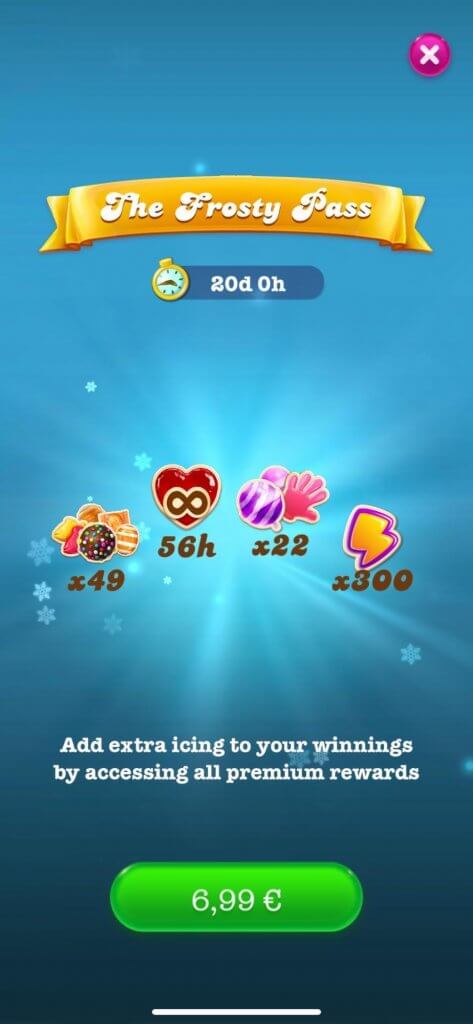
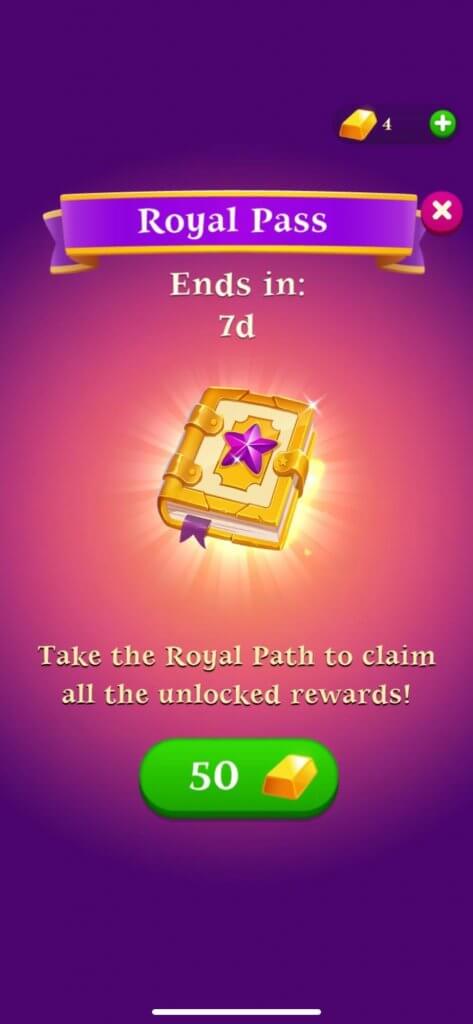
6. Battle Pass optimization
Analyzing the behavior of users who use the Battle Pass will help optimize and increase the game’s revenue. Understand the primary motivation of users, how involved they are, what gets in the way, and what motivates them to go through more stages. To do this, analyze:
- Funnel of passage in the Battle Pass,
- Time to complete each stage of the Battle Pass,
- The average duration of all stages of the Battle Pass,
- What kind of reward motivates users to a greater extent,
- Optimize the reward and price for the Battle Pass,
- Comparative analysis of changes in metrics after updating the Battle Pass, etc.
This will give you more detailed information, which will help you improve the user experience, give you a better idea about the rewards that are most likely to lead users to purchase a Premium Battle Pass and help increase the percentage of users that will win the grand prize.
7. Events in Battle Pass
Motivate users to progress through the Battle Pass stages through various events. An example of such events would be doubling the points received for completing levels in the game within the next 12 hours.
This event can be activated if you see that most users get stuck at a certain stage or when the user does not have much time before the end of the Battle Pass. This will help increase their engagement and increase the number of sessions.
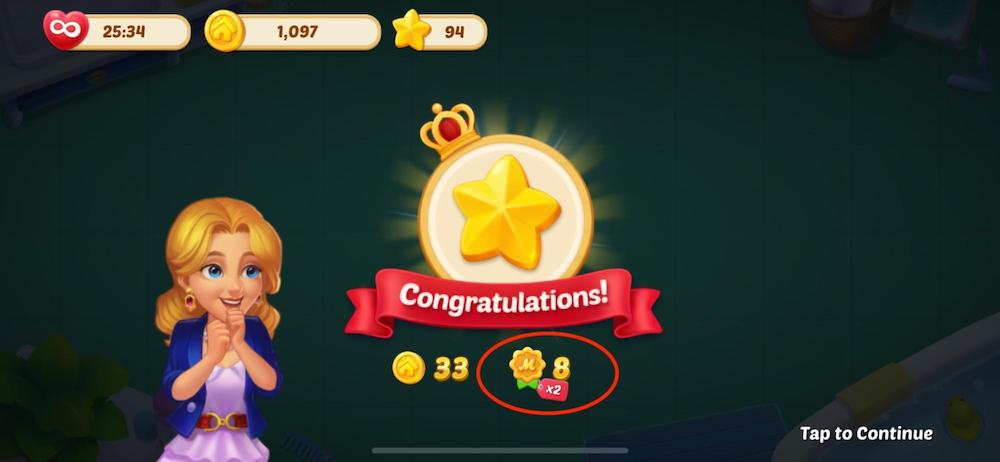
I have analyzed the options for implementing a Battle Pass in many games, as well as how various features of the Battle Pass have been changed in different versions of the games. Let’s take a look at each of the games in more detail. This research was conducted using data from the GameRefinery service.
- You may notice that most of the games have implemented a reward type, where a user who has not bought a Premium Battle Pass receives a prize for completing each stage, but in a smaller amount.
- Rewards for the first stage of the Battle Pass are free in all games.
- In many games, the developers experimented with the length of the Battle Pass. I suspect that this depends not only on optimizing the duration of the tasks but also on the team’s technical capabilities (for example, the release plan for the next update).
- The most common type of Battle Pass is the type where the user receives special points for completing a level. 2/3 of the games prefer to use this particular type of Battle Pass implementation.
Below is a summary table of Battle Pass implementations in match3 games.
